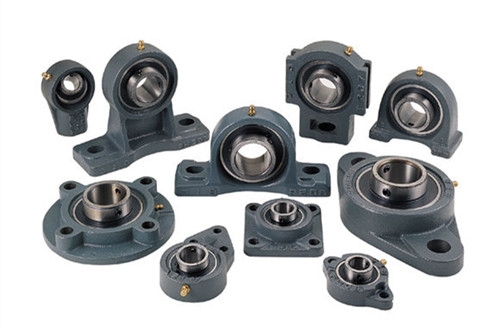Zinc alloys are alloys based on zinc added to other elements. Commonly added alloying elements include aluminum, copper, magnesium, cadmium, lead, titanium, and other low-temperature zinc alloys. Zinc alloys have low melting points, good fluidity, easy fusion welding, brazing and plastic processing, corrosion resistance in the atmosphere, and easy recovery and remelting of residuals; however, they have low creep strength and are susceptible to natural ageing causing dimensional changes. Next Xiaobian introduced zinc alloy materials for use and zinc alloy surface treatment features.

Precautions for the use of zinc alloy materials
1, poor corrosion resistance
When the impurity elements such as lead, cadmium, and tin in the alloy composition exceed the standards, the castings will be aged and deformed, showing a volume expansion, a significant decrease in mechanical properties, particularly plasticity, and a long time or even rupture. Lead, tin, and cadmium have very low solubility in zinc alloys, and they concentrate on grain boundaries to become cathodes. Aluminium-rich solid solutions act as anodes, and promote intergranular electrochemical corrosion in the presence of water vapor (electrolyte). Die castings age due to intergranular corrosion.
2, aging effect
The microstructure of the zinc alloy is mainly composed of a zinc-rich solid solution containing Al and Cu and an Al-rich solid solution containing Zn, and their solubility decreases as the temperature decreases. However, due to the fast solidification of the die castings, the solubility of the solid solution is greatly saturated at room temperature. After a certain period of time, this supersaturation gradually disappears, and the shape and size of the castings slightly change.
3, zinc alloy die castings should not be used in high temperature and low temperature (0 °C below) work environment. Zinc alloys have good mechanical properties at room temperature. However, the tensile strength at low temperatures and the impact properties at low temperatures are significantly reduced.
4, the zinc alloy die-casting due to lack of clamping force, poor mold closing, mold strength is insufficient, the temperature of the soup is too high, there will be surface burr phenomenon, this phenomenon is called the product Pifeng, often the company must face Post-processing process. It is mainly based on the nature of the product using manual grinding, hydrogen and oxygen explosions and Zhaoling frozen shot blasting machine to solve.

Zinc Alloy Surface Treatment Features
1. The surface of the die casting is a dense layer of about 0.05 to 0.1 mm. Below the surface layer is a loose porous structure. For this reason, when polishing and polishing, do not throw away all the surface to reveal the loose bottom layer. Otherwise it is very difficult to electroplate, and it will reduce the corrosion resistance of the product.
Die castings are solidified from the molten state during die casting. Because of the different freezing points during cooling, segregation often occurs on the surface of the die-cast parts, resulting in aluminum-rich phases or zinc-rich phases in some parts of the surface. For this reason, do not use strong alkalis and strong acids for oil removal and etching during pretreatment. Because strong alkali can make Al-rich dissolve first, and strong acid can make zinc-rich phase dissolve first, thus forming pinholes and micropores on the surface of die-cast parts, and it will leave strong alkali and strong acid liquid, so that when the plating is applied Afterwards, it easily causes peeling and bubbles.
3, the shape of zinc alloy die castings is generally more complex, electroplating should use a solution with better dispersion and coverage. In order to prevent the replacement of metal with a positive potential by zinc in the recessed or masked place, so that the bonding force is not good, the preplating layer should select a plating solution with good dispersion ability and covering ability.
4. The coating used is preferably a bright coating, to avoid the polishing process or reduce the polishing workload. On the one hand, due to the complex shape, it is not easy to polish. On the other hand, it can also ensure the thickness of the coating to ensure quality.
5. If the first layer is a copper layer, its thickness should be slightly thicker, because when the copper is plated on the surface of the zinc alloy, the thinner the diffusion of the copper layer occurs, the faster the copper thickness must reach at least 7μm or Thicker.
6. The multi-layer chrome plating layer is a cathodic protection plating layer of the zinc alloy, so the plating layer must have a certain thickness to ensure that the plating layer has no porosity. Otherwise, since the electrode potential of the zinc alloy is relatively negative, a white powdery corrosion product of basic zinc carbonate is easily generated in the moist air, so it is necessary to select an appropriate plating thickness according to the use conditions of the product.
7, if the die casting process is not suitable, or the die casting mold design is unreasonable, so that the cold die casting surface, shrinkage, loose or pinhole, etc., then, even if the electroplating process to take measures, they often can not get a satisfactory coating.
Editor's summary: The use of zinc alloy materials and zinc alloy surface treatment features introduced here, and hope to help everyone. If you want to know more related information, you can pay attention to this website information.
Zinc alloy lock sets up the list of decoration materials Notice Decoration materials Brand decoration materials List Decoration materials Knowledge
Zhongda Steel Structure , https://www.zhongdametal.com